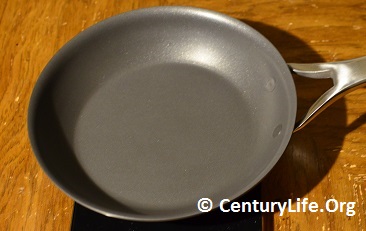Cooking surface: 2/5 Poor (3/5 Good once seasoned, it is less sticky as the surface becomes like hard plastic; but still struggles with acidic foods so it’s not for all-purpose cooking)
Conductive layer: 2/5 Poor
External surface: 1/5 Very Poor (3/5 Good if seasoned on the outside as well as the inside of the pan, to make it more rust-resistant)
Example: Lodge, Staub/Le Creuset (for enameled cast iron)
Health safety: 4/5 Good (assuming no ill effects from seasoning)
—–
DESCRIPTION
First, the pros: cast iron is cheap and can develop a semi-nonstick surface (“seasoning“) and can be heated to very high temperatures safely, and going from stove to oven (or vice versa) is one way to work around cast iron’s relatively poor thermal conductivity. Cast iron is usually made 3mm+ thick so it will have excellent heat retention and not drop in temperature too much even if you throw a cold steak on it, but note that the same can be said of things such as stainless steel with thick aluminum disc bases, which do not cost much more than cast iron. Thick cladded designs like Demeyere’s Proline skillets (4.8mm thick, 3.7mm of which is aluminum) also have great heat retention. Pound for pound, aluminum has nearly double the heat capacity of cast iron and can recover from losing heat much faster and more evenly. [Read more…]

